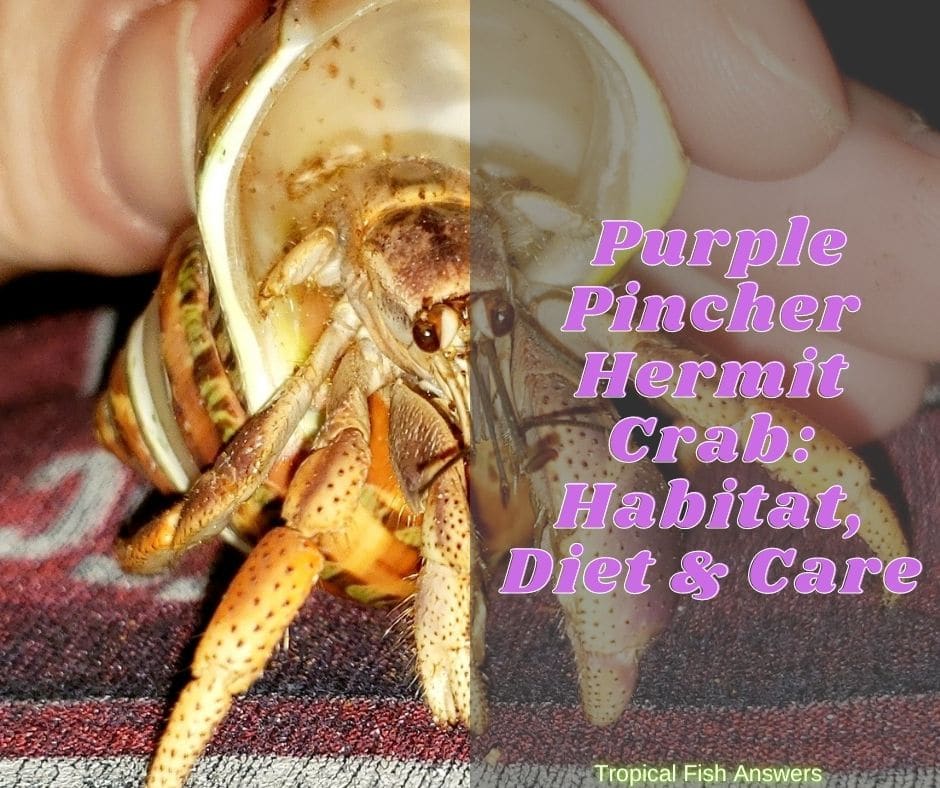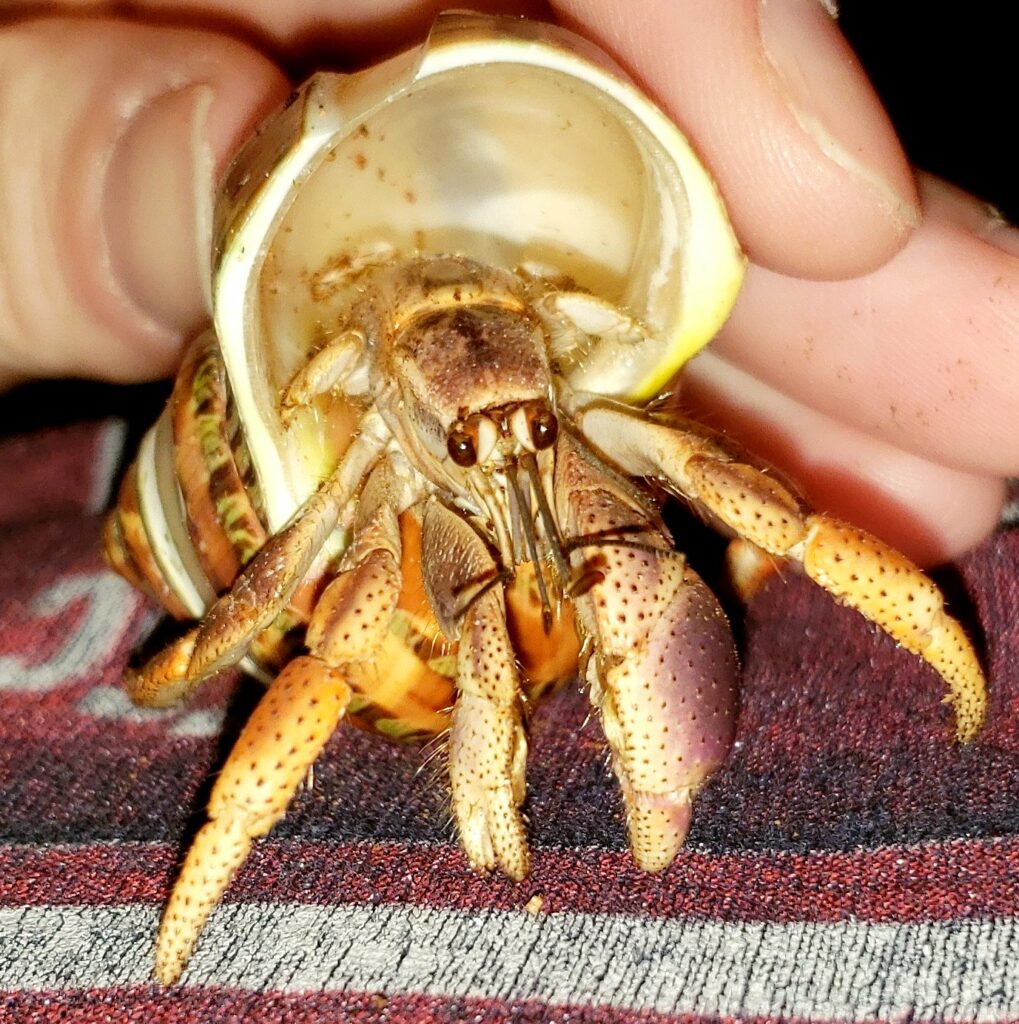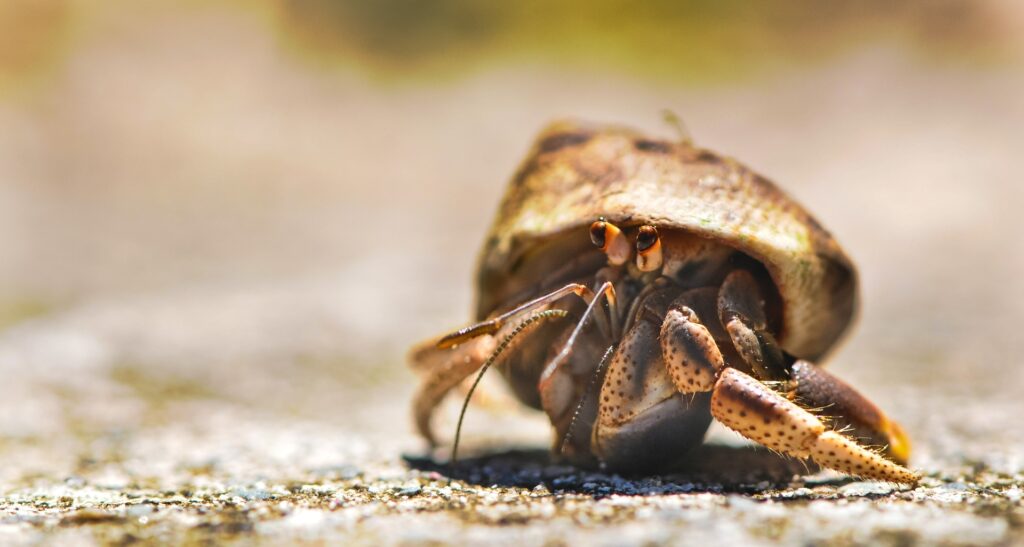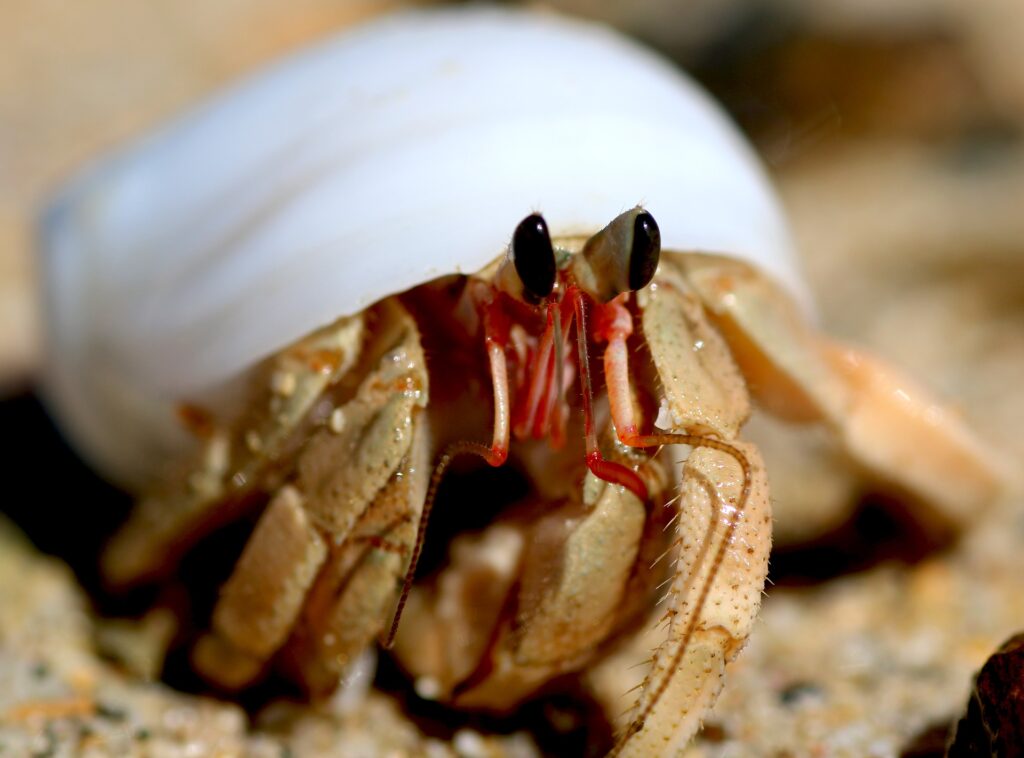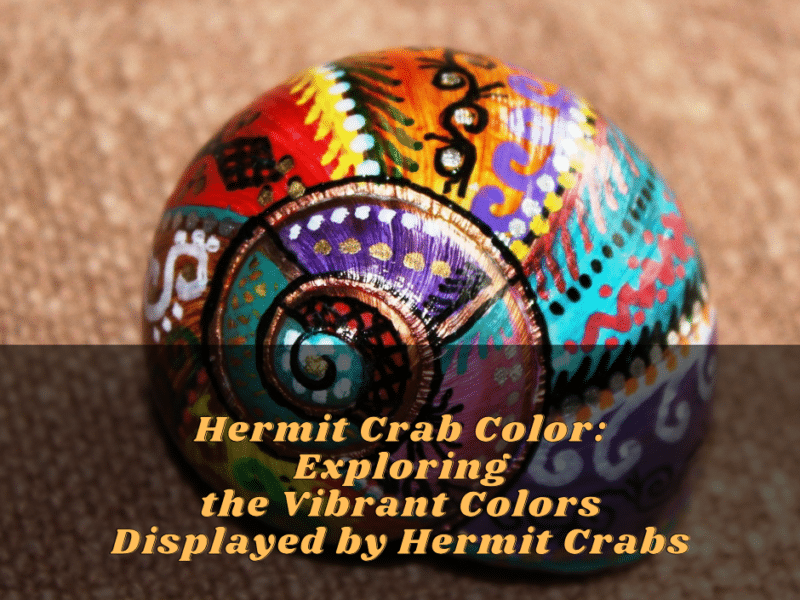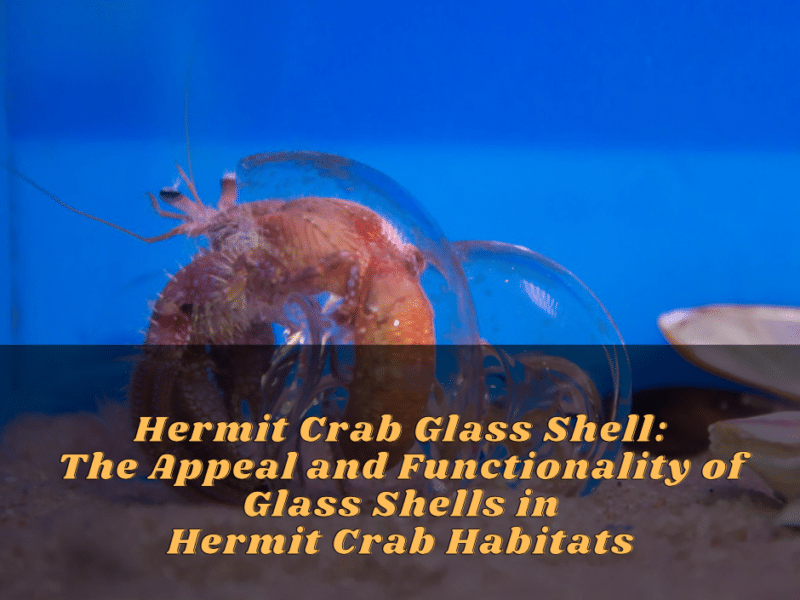|
Listen:
Getting your Trinity Audio player ready...
|
Currently, two types of hermit crab are commonly sold as pets: the Ecuadorian crab and the Caribbean crab. Caribbean crab is also known as Purple pincher hermit crab. It is the most common species of a hermit crab. Owners often buy them to make unique and exciting pets.
Habitat
Purple pincher hermit crab can grow best in a glass tank. You only need to use about 10 gallons for a few hermit crabs. When your hermit crab grows, or you want to buy more crabs to add more vibrancy, you need to pay attention to expanding the size of your tank.
Always keep the tank around 75 – 80 degrees and humidity levels around 60 – 70%. Besides, do not forget to use sand and coir mixtures with a ratio of 50/50 mixed together.
Depending on the size desired, you may need to add a thick layer of sand for hermit crabs that have a habit of burrowing. Don’t forget to decorate your aquarium with items such as branches, logs, seashells, etc., to make it more eye-catching and lively.
Diet
The purple pincher crab is an omnivore. They are not picky eaters like other crabs, and they can eat fruits, leafy vegetables, or various insects. You can consult with the owners of this crab species to prepare them an essential diet and supplement nutrients with fresh fruits and vegetables.
For some Purple pincher hermit crabs, you will feed them more variety: bean paste, apples, grapes, carrots, buckwheat flour, crackers, popcorn, dried insects, or live insects. In addition, you can consider changing the fresh water in the tank at least once a week so that the crabs can constantly adapt to the living conditions and grow well.
Molting
As Purple pincher land hermit crabs develop, they will undergo a molting stage. Young crabs will have a more frequent molting period than adults. They can molt over 12-18 months.
During that “skin change,” they can burrow underground for a few days or up to 8 weeks. If the hermit crab is molting, the exoskeleton will separate and gradually wiggle to separate from the old skeleton.
You should not be too worried or stressed but instead should leave the hermit crab alone during this molting time. Once they’re done, don’t rush to get rid of the “old house” and leave it alone because they’ll eat it.
Changing Shells
If you keep Purple pincher hermit crab, you need to ensure that the shell shapes and sizes are different from having more options to upgrade or completely change their “house.”
Purple pincher hermit crabs change their shells often, especially if they can’t find a “new home” like that; the owner must prepare a variety of surfaces with a variety of different sizes.
If you want to raise more Purple pincher hermit crabs, you have to prepare a lot of “houses” so that they can freely choose without competing with each other.
Autotomy
With this hermit crab, their defense mechanism will be to put a claw (a limb) out to defend themselves. Purple pincher hermit crab legs have joint breaks, and if they get caught in the legs or feet, they can break off to give the crab time to escape. When a leg is broken, the muscles contract to reduce the rate of blood loss.
The animals will have to go through several molts, but eventually, the parts are successfully restored, returning to their original size. In addition, they will grow up a bit each time they find a “new home” that is right for them.
Care for purple pincher hermit crab
According to many studies, this animal is relatively easy to take care of, and if you know how to take care of it properly, it will live up to 10-20 years. You can start caring for your crabs by designing a complete tank consisting of saltwater (similar to seawater), substrate, and plants.
Any pet store will have everything you need. So you can search to buy them and ask them how to care for purple pincher hermit crabs properly.
Here are the steps for you to take the best care of your pet:
Setting up a tank
Step 1: Choose a suitably sized tank
It would help if you chose a tank that is about 10 US gal (38 L). It is considered an ideal size for those starting with the petting process.
The price of this tank is relatively low, and it is sold at most pet stores. You can refer to the following fees:
- A 10-gallon (37.9 L) tank costs about USD 13
- A 20 US gal (76 L) tank costs about USD 30.
In addition, you also need to avoid buying tank building kits at the store because they do not work to retain moisture in the substrate suitable for a hermit crab.
The Hermit crab is an animal that likes to climb. They have a hobby of running away from their tank. Therefore, do not forget to buy an extra lid and close it tightly when the pets are inside.
Step 2: Buy at least 3-4 hermit crabs.
A purple pincher hermit crab is an animal that lives in groups, not in isolation. Therefore, you should never buy just one but should buy about 3-4 simultaneously.
After a period of rearing and caring, you can increase the number. However, you should also consider the size of each crab to buy accordingly. On average, they are about 2 – 3 inches (5.1 – 7.6 cm) long.
If you want to upgrade your crab collection gradually, change the tank size. You can refer to the 20 US gal (76L) tank. It is a suitable tank area for raising about >6 purple pincher hermit crabs simultaneously.
Step 3: Apply a base layer of about 3 – 4 inches (7.6 – 10.2cm) on the entire bottom of the tank
The perfect ratio for the tank’s purple pincher hermit crab habitat is 1:1 consisting of sand and coir. You can buy both of these at pet stores, then mix them in your house and spread them on the bottom of the tank.
If you can’t find coir at the pet store, check it out at a grower store because coir is the part that’s harvested from the middle of the fiber and the husk. They have the effect of making the surface more porous, suitable for babies to live.
However, if you go to the plant store, they will often be sold as dry bricks, and you need to break them before mixing with the sand.
Step 4: Decorate 5-6 objects in the crab tank
Purple pincher hermit crabs are nocturnal, so they will choose a suitable place to hide and sleep behind for three days. Therefore, you need to place items around the tank properly. The decorations include shells of all colors, sizes, wooden blocks, small and medium sizes, etc.
However, before putting them in the tank, you need to wash them with soap. You can easily find driftwood and plastic rocks at pet stores or places that sell close to the ocean, go along the shore, search and collect them to decorate the tank, and become more vivid and eye-catching.
Step 5: Hang a net behind for the hermit crab to climb on
In their natural habitat, purple pincher hermit crabs have a climbing habit. So to recreate this, the owner should design a net or use a piece of wood from the pet store to place in the tank and let them climb.
Step 6: Choose suitable shells, various sizes.
As we all know, purple pincher hermit crabs have a habit of moving to a “new home” in case of need. They will do this as they grow larger and no longer fit into the tiny shell.
Your job is to choose and provide shells in various sizes to select the new home that is best for them.
This animal can become aggressive, competing with other animals for its shell. You should add as many shells as possible to avoid a “war” situation in the future. A small note is that before putting new covers in the tank, you should rinse them with hot water to attract your pet more.
Maintaining and Cleaning the Tank
Step 1: Preheat the tank to 75 – 85 degrees F (24 – 29 degrees C)
The purple pincher hermit crab is native to regions with hot, humid, and high temperatures. You can consider adding a heater at the bottom of the tank so that the tank always has a sufficient amount of heat when it is cold. Don’t forget to hang a thermometer on the tank edge to always check the temperature in the tank quickly.
Step 2: Regularly clean the tank once a month with white wine vinegar and a sponge
The purple pincher hermit crab is a relatively clean animal. Therefore, you should always keep your tank as clean as it is.
If you find the glass dirty, use 1-2 drops of white wine on a sponge and wipe the messy part. Use a small shovel to dispose of the crab wastefully during tank cleaning.
You can completely clean the tank inside as long as you don’t let them out. If they are trying to “break out,” put them in another covered glass tank so they can’t climb out. Do not forget to replace the old substrate if it is too old and gradually shows signs of mold.
Bonus
Conclusion
Hopefully, the information about Purple pincher hermit crab has helped you better understand this animal as well as the know-how to take care of them if you intend to keep them.
